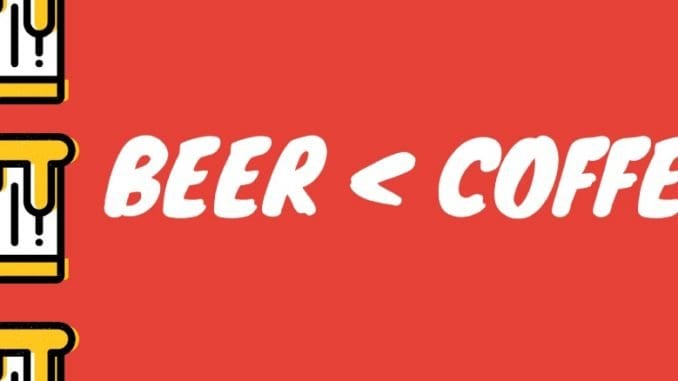
Can beer brewers become roasters? Are coffee and beer at all the same? In this series, Ben Dorrington gives us an intimate look at his transition from the beer universe to the coffee world.
BY BEN DORRINGTON
SPECIAL TO BARISTA MAGAZINE
Episode Four: Ferry breakfasts, the Mythos, and feeling intimidated by technology
(If you’re new to this series, you can check out episode one here, episode two here, and episode three here.)
When I was hired by Discovery Coffee, the primary focus for my role was to be that of a coffee tech/service guy. Indeed, in the future, as the needs of the business and my skills dictate, I will likely move into service/support full time. However, for the time being, it is one of many skills I am developing simultaneously. After a few weeks of focusing on cafe operations and espresso service, I was excited to get into something technical.
It was during one of my early floor shifts that we were visited by Danny and Andrew from Espresso Coffee Machines (ECM) in Burnaby, British Columbia. ECM are the B.C. distributors for Nuova Simonelli/Victoria Arduino alongside other brands. We use Mythos grinders in all five of our locations, and have a Black Eagle in our Whole Foods location. During their visit, they mentioned a small training session they were running at their facility the following week. It was decided: I was booked in for my first technical session.
The following Friday, I line up half asleep for a 7 a.m. ferry, with an apple and a travel mug full of our Panamanian coffee. Bleary-eyed and hungry, I spend the next 90 minutes crossing the Salish Sea with a head full of wonder. I ponder whether the more experienced techs will see through my lack of skill/knowledge/experience. I wonder how hard it will be to actually maintain this equipment. I wonder how complex the latest espresso machines actually are. I wonder if I’m going to regret the ferry breakfast all day long.
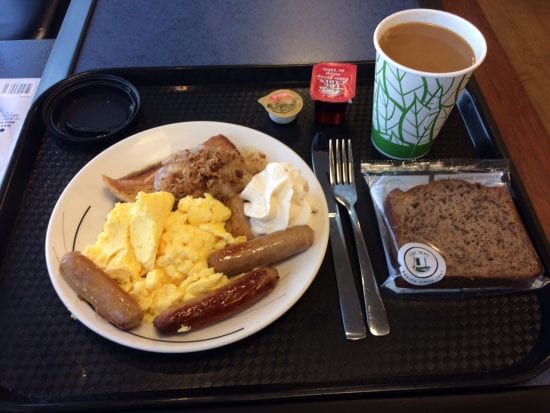
It is this BC Ferries breakfast that gives me pause for thought. I slide up to the counter and order a ‘Bon Voyage’: cinnamon French toast topped with stewed apple and streusel-oat mix, bulk-made (rubbery) scrambled eggs, and a side of sausage. Alongside is a cup of genuine ‘Fresh Brewed Specialty Coffee.’ The blatant use of ‘specialty’ as a trendy selling word makes me smirk to myself. In reality, the brown liquid has little in common with the product our industry prides itself on producing. This hijacking of language has also recently occurred within the craft beer industry. Macro-brewers—companies that, in general, produce bland, watery ‘Light American Lagers’—have in the last couple of years begun jumping on the craft bandwagon. For coffee, as with beer, it seems that no word is sacred.
I manage to fight my way through the nightmare that is Vancouver traffic, pull up at ECM and immediately run into another tech. “G’day!” he exclaims, with a very familiar antipodean twang. In B.C., it seems, you can’t escape Aussies. We quickly shake hands, swap immigration stories (something I find myself doing a few times a week about my move from New Zealand), and head into the building. Andrew from ECM is waiting for us with a couple of delicious 49th Parallel espresso shots. We greet the other techs, one of whom is also brand-new to the industry, and the session begins.
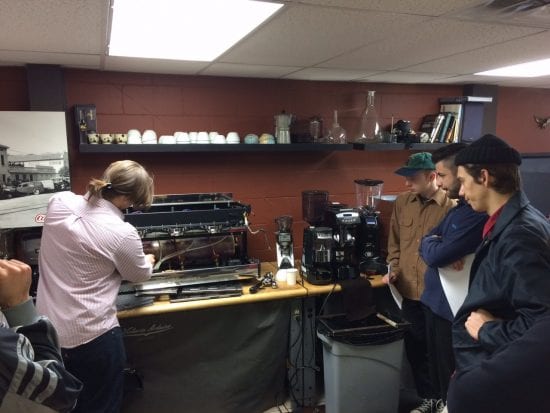
Our first focus for the day is maintenance and troubleshooting on the beloved Nuova Simonelli Mythos grinders. We walk through general burr cleaning and a few things to watch for. Fabrizio, our trainer, is the service department manager at ECM—a title that really doesn’t do him justice. You get the feeling that he lives and breathes boilers and dispersion screens, and has espresso instead of blood in his veins. This is a guy whose knowledge of the Simonelli machines is so deep, he can quote part numbers off the top of his head. He has an intimate knowledge of these machines, how they are built, how they should work … and how they actually work. It’s a level of comfort to aspire to. We learn a few troubleshooting tips for noisy grinders and fouled burr plates. Fabrizio even shares a few hacks to help prevent the buildup of fines behind the burrs. The whole time I can’t help but think that a grinder/espresso machine is nothing but a miniature brewery—admittedly, with a bit more pressure involved, but very similar. Here we use a basket and portafilter to pass hot water through coffee grounds. In a brewery, the lauter tun is basically a much bigger version of that—using a false bottom, we pass water through milled malted barley, collecting sugars.
With a tentative grasp on cleaning and maintaining the Mythos, we move onto routine maintenance for the Aurelia, White Eagle, and Black Eagle. The level of technology in these machines, quite honestly, is mind-boggling. We briefly cover replacing gaskets and screens and lubing steam valve O-rings, and then move onto an introduction to T3 technology. This is where I really begin to feel intimidated. These espresso machines are basically simple computers that brew coffee—definitely a long way out of my comfort zone. Fabrizio admits that he is getting carried away as he removes side panels and starts talking about flow restrictors and how they can be used to control temperature. Despite the intimidation of three different stages of temperature control, I keep hearing familiar words: check valve, pressure release valve, flow meter. All of these terms are used in both the brewing and coffee industries.
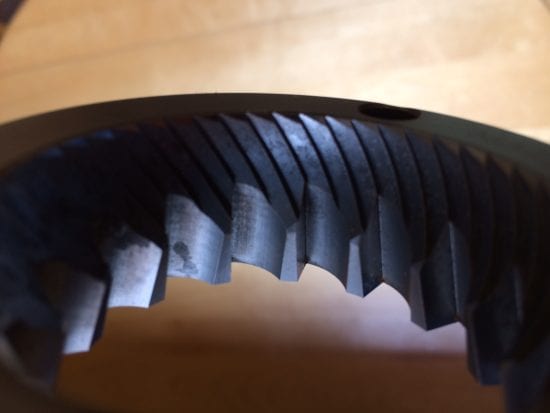
I can tell it’s going to be a journey of years, not months, learning to work with these machines. However, the stage is set, and as it turns out, some of the vocabulary is the same.
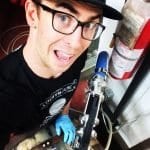 ABOUT THE AUTHOR
ABOUT THE AUTHOR
Ben Dorrington is a beer and coffee enthusiast. He has been a beer brewer for years, and is just getting his feet wet with coffee. He lives in Victoria, British Columbia, with his wife and daughter.


